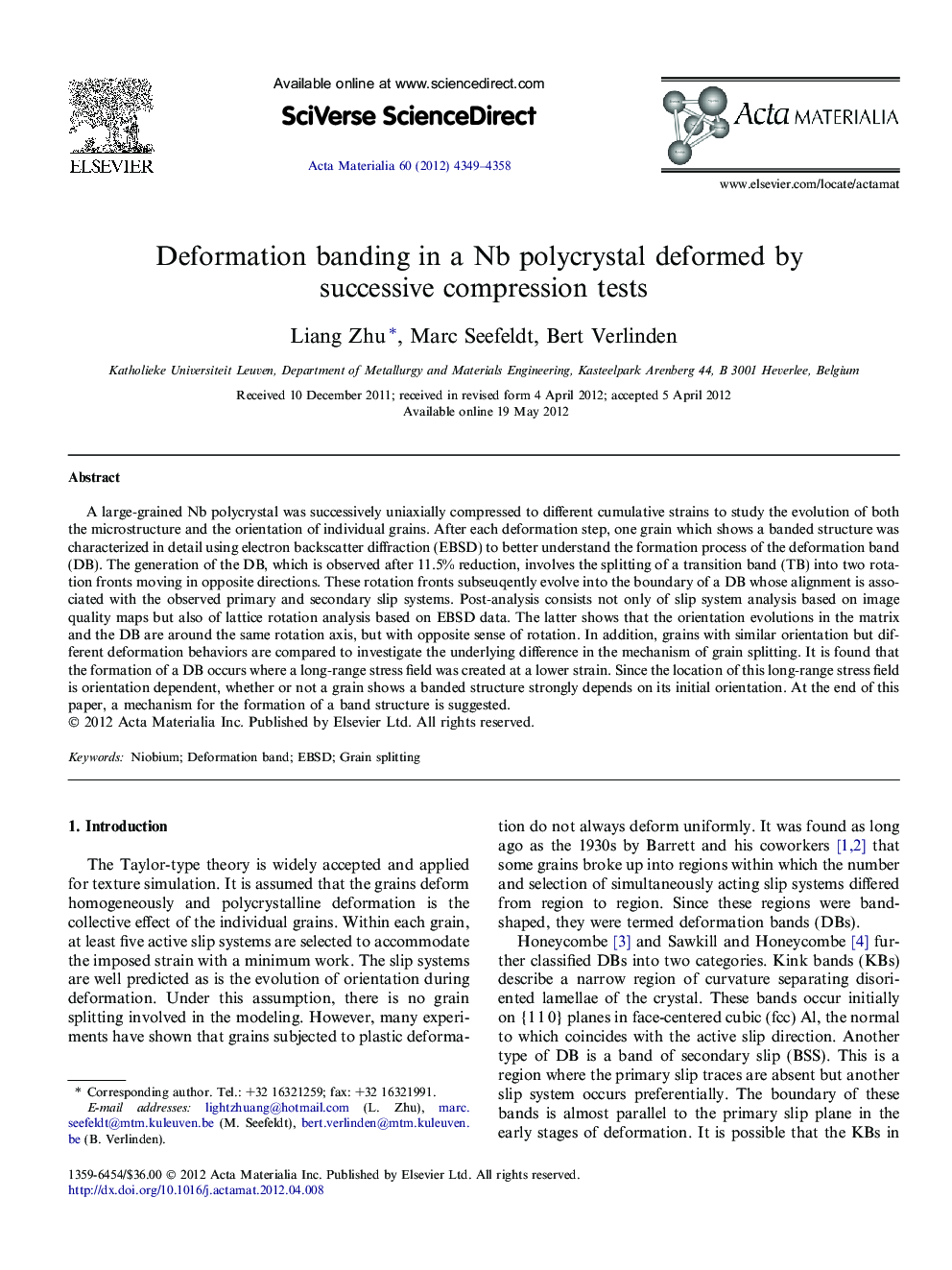| Article ID | Journal | Published Year | Pages | File Type |
|---|---|---|---|---|
| 1446682 | Acta Materialia | 2012 | 10 Pages |
A large-grained Nb polycrystal was successively uniaxially compressed to different cumulative strains to study the evolution of both the microstructure and the orientation of individual grains. After each deformation step, one grain which shows a banded structure was characterized in detail using electron backscatter diffraction (EBSD) to better understand the formation process of the deformation band (DB). The generation of the DB, which is observed after 11.5% reduction, involves the splitting of a transition band (TB) into two rotation fronts moving in opposite directions. These rotation fronts subseuqently evolve into the boundary of a DB whose alignment is associated with the observed primary and secondary slip systems. Post-analysis consists not only of slip system analysis based on image quality maps but also of lattice rotation analysis based on EBSD data. The latter shows that the orientation evolutions in the matrix and the DB are around the same rotation axis, but with opposite sense of rotation. In addition, grains with similar orientation but different deformation behaviors are compared to investigate the underlying difference in the mechanism of grain splitting. It is found that the formation of a DB occurs where a long-range stress field was created at a lower strain. Since the location of this long-range stress field is orientation dependent, whether or not a grain shows a banded structure strongly depends on its initial orientation. At the end of this paper, a mechanism for the formation of a band structure is suggested.
